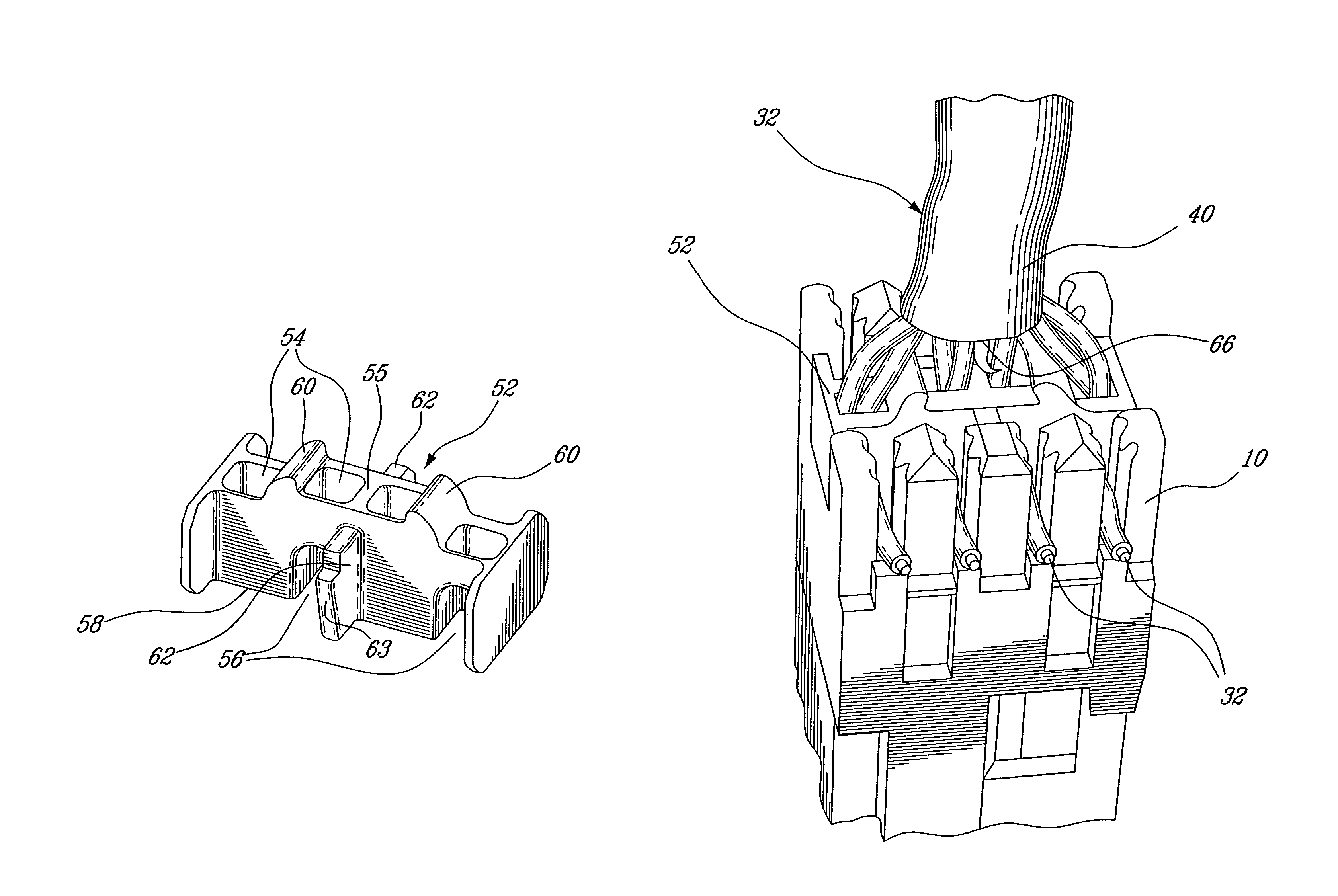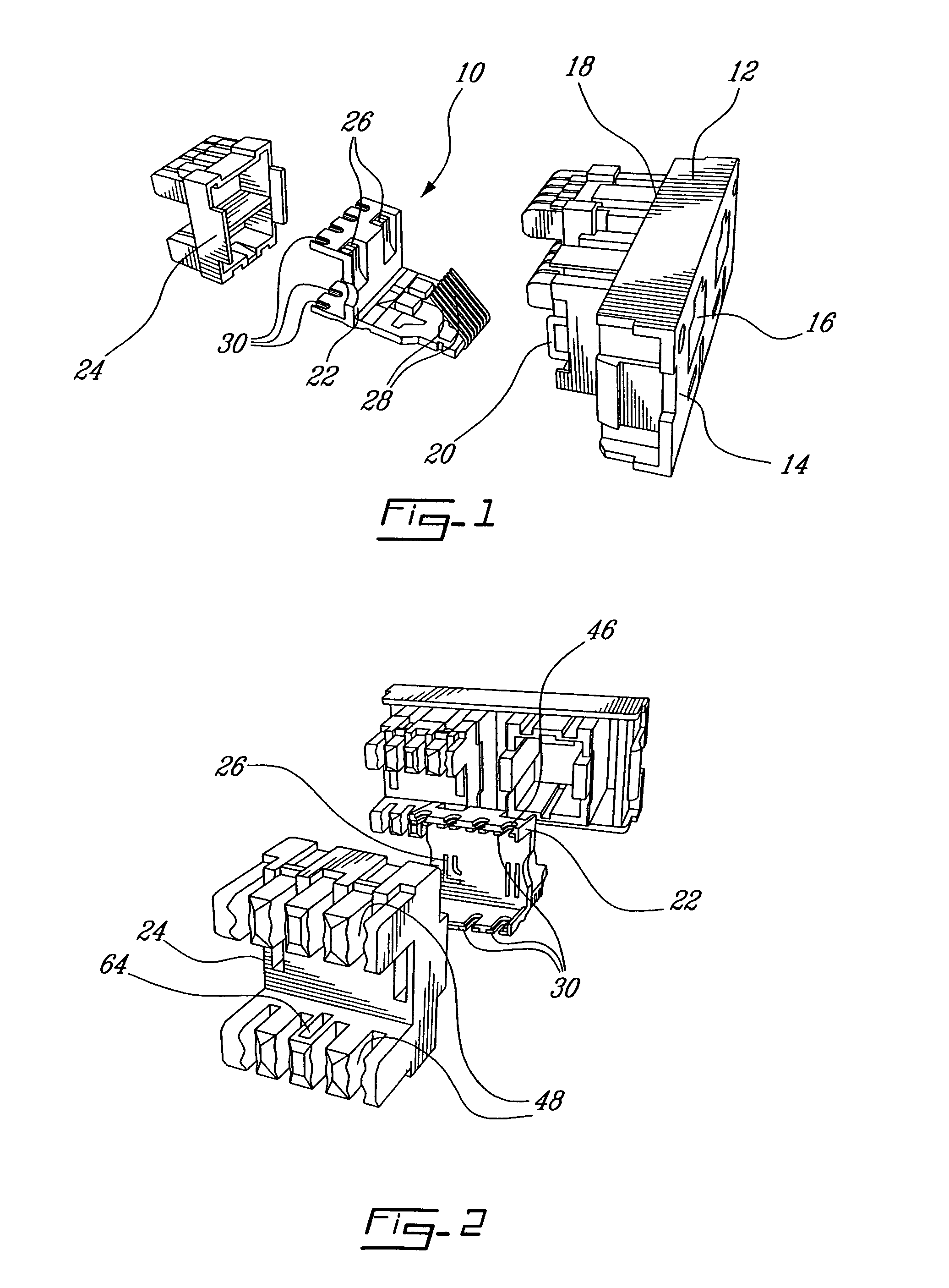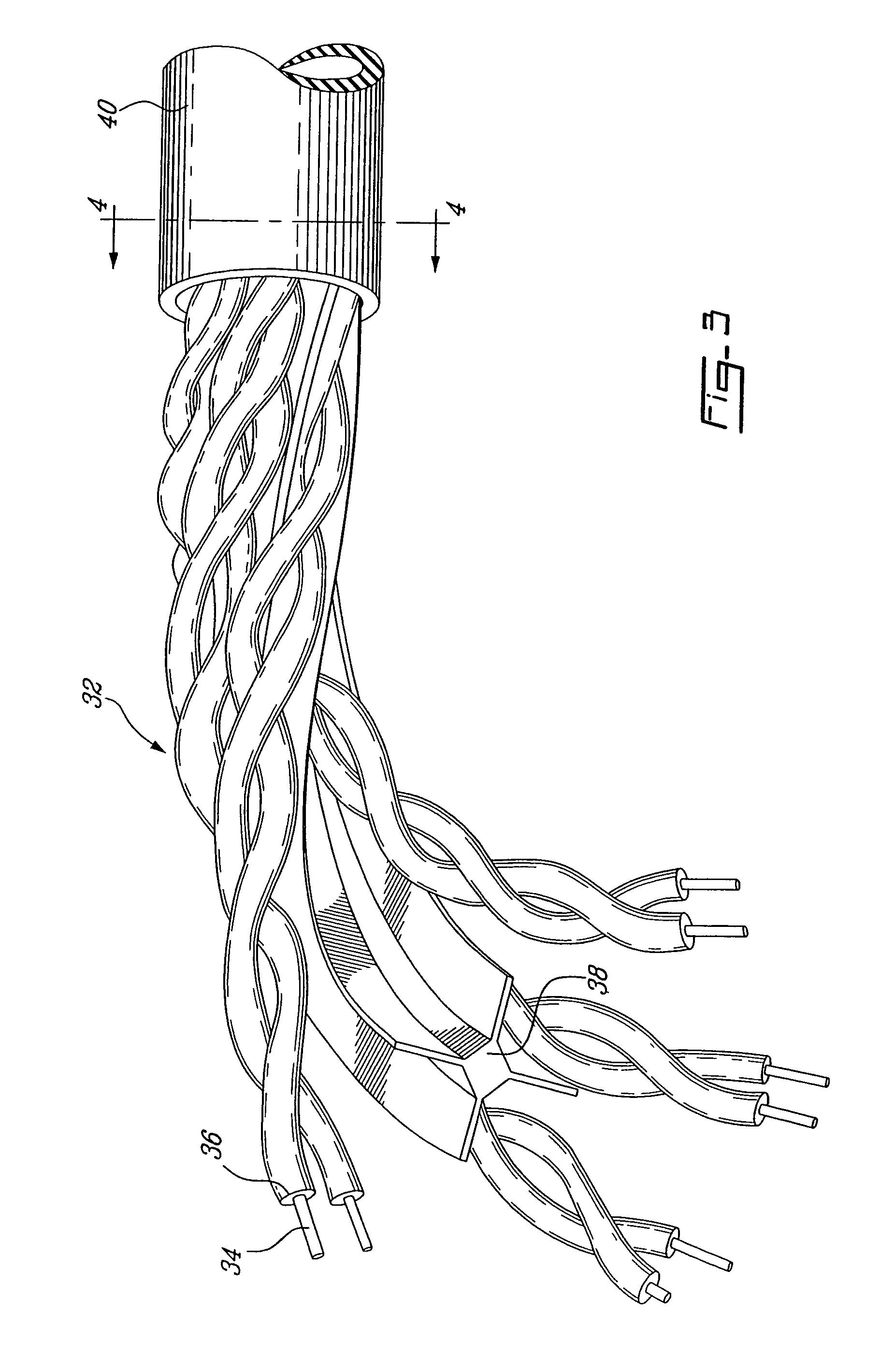Wire lead guide and method for terminating a communications cable
a technology of lead guide and communication cable, which is applied in the direction of electrically conductive connection, coupling device connection, electrical apparatus, etc., can solve the problems of significant performance degradation, affecting performance, and severely affecting transmission performan
- Summary
- Abstract
- Description
- Claims
- Application Information
AI Technical Summary
Benefits of technology
Problems solved by technology
Method used
Image
Examples
Embodiment Construction
[0027]Referring to FIG. 1, a connector assembly, generally referred to using the numeral 10, for insertion into a patch bay or receptacle cover (both not shown) is disclosed. The connector assembly 10 is typically comprised of a front plate 12 having moulded into its front side 14 a socket 16 into which a patch cable having the requisite connector plug (both not shown) can be inserted. The front plate is typically manufactured from a dielectric material which is easily cast such as plastic. Moulded into the rear side 18 of the front plate 12 is a receptacle 20 for receiving a snap in interconnection module 22 and snap on cover 24.
[0028]Note that although the socket 16 in the present illustrative embodiment is adapted to receive an RJ-45 type plug, sockets as in 16 having shapes adapted to receive other types of connectors are also within the scope of the present invention. Additionally, the connector assembly 10 could also be integrated into a patch panel (not shown) or form part of...
PUM
| Property | Measurement | Unit |
|---|---|---|
| lay lengths | aaaaa | aaaaa |
| length | aaaaa | aaaaa |
| transmission frequencies | aaaaa | aaaaa |
Abstract
Description
Claims
Application Information
 Login to View More
Login to View More - R&D Engineer
- R&D Manager
- IP Professional
- Industry Leading Data Capabilities
- Powerful AI technology
- Patent DNA Extraction
Browse by: Latest US Patents, China's latest patents, Technical Efficacy Thesaurus, Application Domain, Technology Topic, Popular Technical Reports.
© 2024 PatSnap. All rights reserved.Legal|Privacy policy|Modern Slavery Act Transparency Statement|Sitemap|About US| Contact US: help@patsnap.com










